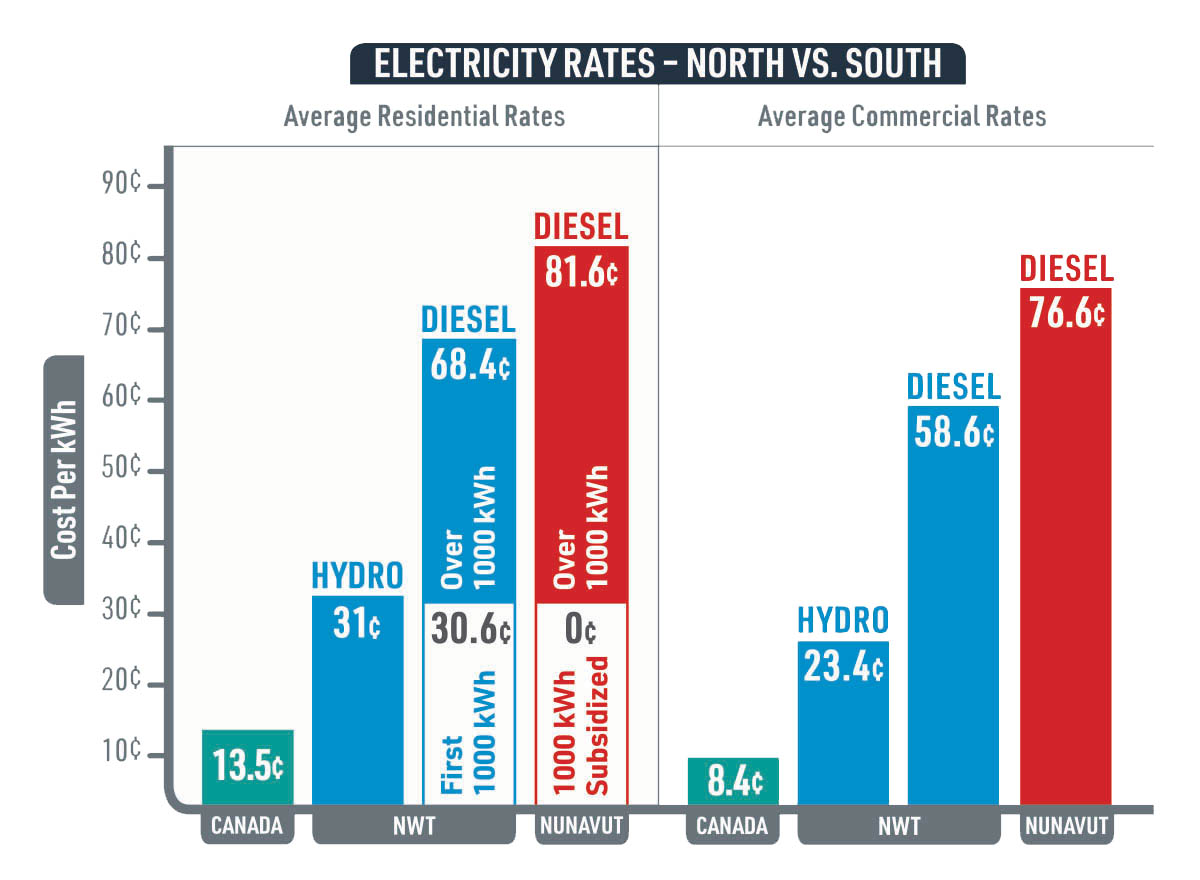The Challenge
The Challenge
The cost of electricity in Canada’s remote
communities can be 900% higher than in the South.
communities can be 900% higher than in the South.
Reducing the Total Cost
of Energy and Emissions
The cost of sustaining our communities is extremely expensive given the high cost of heat and power, which directly affects local businesses, employers and the number of jobs in these communities. One of the reasons that costs are so high is that there is no common utility grid connecting most remote locations. Those communities rely on a local micro-grid for power, which traditionally uses diesel-fueled generators. Home heating fuel, propane and/or wood pellets are required to supplement heating sources most of the year. All these fuels must be transported long distances, by ship or truck, at significant expense and environmental risk. As a result, the total cost of energy and greenhouse gas emissions are dramatically higher than in southern Canada.

NWT HYDRO (NT Power corp)
9 communities have access to hydro electricity.
Average Residential Rate – $18 monthly service charge + 31¢
Average Commercial Rate – $40monthly service charge + 23.4 ¢.
NWT DIESEL (NT Power corp)
25 communities rely on diesel power plants.
Average Residential Rate – $18 monthly service charge + 30.6¢ under 1000kWh, 68.4¢ over 1000kWh.
Average Commercial Rate – $40 monthly service charge + 58.6¢.
NUNAVUT DIESEL (Qulliq Energy)
All 25 communities rely on diesel power plants.
Average Residential Rate 81.6¢ over 1000 kWh.
Average Commercial Rate 76.6¢
Sources: Hydro Quebec, Qulliq Energy Corp., NWT Power Corp., Northland Utilities., Energyhub.org
Improving Power
Plant Efficiencies
Making matters worse, most of the diesel power plants operating in these communities today are aging and inefficient. For every litre of diesel fuel consumed by these plants, roughly 33% is converted into electricity, while the remaining 67% is lost as heat, friction and noise. In the North, where heating accounts for 60% of the cost of energy this extremely valuable heat byproduct is literally disappearing into thin air.
The inefficiency of the diesel power plants is made even worse because they burn large amounts of fuel even when the community’s electrical requirements are low, such as in the middle of the night. This further reduces plant efficiency to 20% at best. There is a lot of room to improve!

Taking Advantage
of Heat Capture
Capturing the heat emitted by the old diesel power plants would seem like a great idea. Unfortunately, given the size of the old engines, heat recapture is often not practical. To do so would require very large heat exchangers that are costly and difficult to install. And during the warmer months of the year there is little need for the heat, which means the exchangers would have to be removed. In remote locations this would require significant time, effort and expense.
